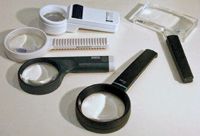Article
'Optic boom' sets sights on boomer consumers
With the number of baby boomers expected to increase to 50 million within the next 10 years, the next boom in the eye-care industry is rapidly approaching. Call it an "optic boom," if you will. New cases of vision loss caused from macular degeneration, cataracts, glaucoma, and diabetic retinopathy are rapidly increasing. Projections indicate that the current level of 13.5 million cases will double by the year 2020.



There are several models available for providing low-vision aid services in your practice. However, with each individual model, these areas need to be considered:

For most patients and their families, the low-vision testing process is very intense. Major lifestyle and financial decisions are required and patients are overwhelmed. By taking the time to present the care you are recommending thoroughly and providing adequate time for processing and asking questions, patients can be put at ease and are more comfortable and confident with the decisions they have made.

Do not make the assumption that the patients or family members are knowledgeable about the patient's ocular condition. Discuss the condition in detail as well as the associated visual implications of the condition. Review how the optical aids will work and how they can be used to meet the goals.
Often, goals can only be met partially and patient compromise is required. Discuss this openly with the patient and the family. Ask the patients directly if they are willing to make these compromises or modify their stated goals. This frank discussion can eliminate many potential problems in the future.
Newsletter
Don’t miss out—get Ophthalmology Times updates on the latest clinical advancements and expert interviews, straight to your inbox.




